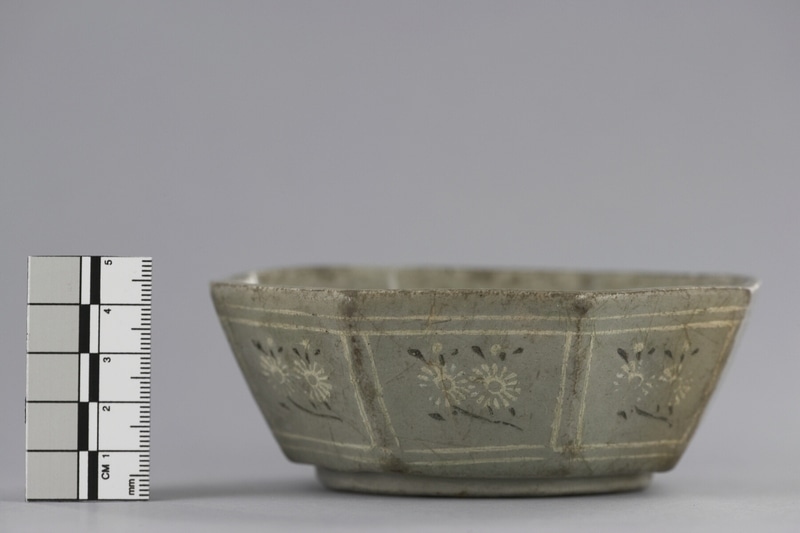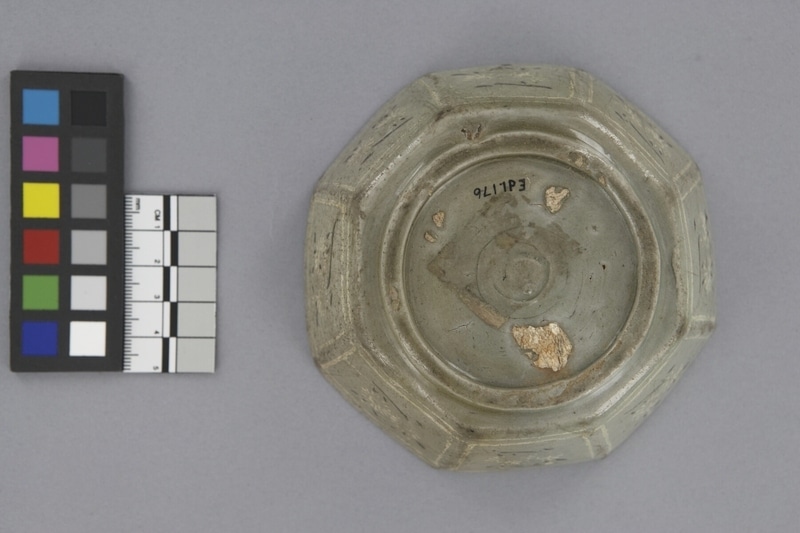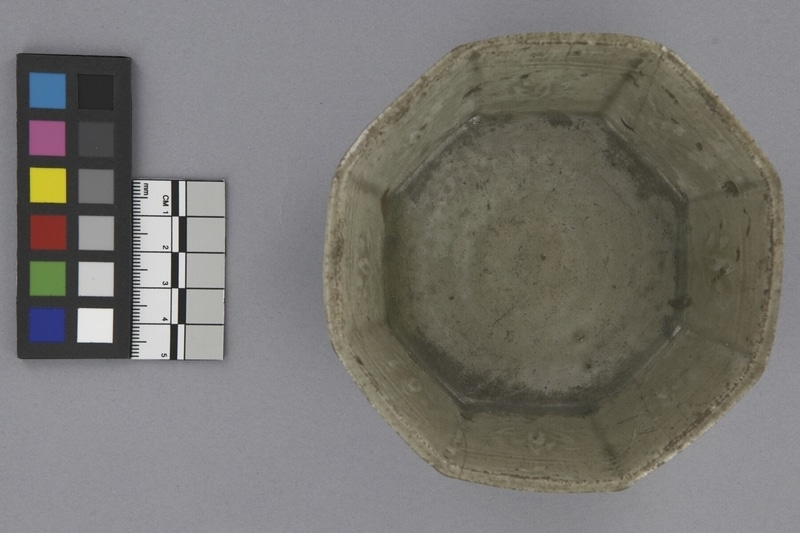Bowl Item Number: Ed1.176 from the MOA: University of British Columbia



Description
Octagonal, grey bodied stoneware dish, or bowl, on flat base with glazed ring foot and several rough spur marks under base and on foot. Sides are thick (0.5cm), straight and slightly flared. On outside of each facet is a white trapezoid, enclosing a design of two stylized white chrysanthemum patterns, with leaves and stems in black. Above and below trapezoids are white lines around circumference of bowl. Inside bowl on each facet is rough design of three leaves in white slip, above which is a line and a band of geometric pattern. Heavy grey glaze, somewhat crackled, with dark spots.
History Of Use
This piece appears to date from the late Goryeo dynasty (고려; 高麗; 918–1392). The chrysanthemum patterns inlaid on celadon are known as sanggam (상감; 象嵌). Believed to have been produced since the mid-twelfth century in Korea, their origins are not clear. They likely derived from the practice of decorating bronze vessels with silver inlay, and inlaid lacquerware. In the thirteenth and fourteenth centuries, this inlaid technique was widely used in the production of Goryeo celadon. Pottery and porcelain produced during the Goryeo dynasty are called Goryeo dojagi (Goryeo ware; 고려도자기; 高麗陶磁器); the celadon (green-gray glazed) ceramics are known as Goryeo cheongja (고려청자; 高麗青磁), which was the main type produced during this period in Korea. Celadon originated in China, and Goryeo potters learned the techniques from celadon traditions of the Song dynasty (960–1279). The Buan (부안군) and Gangjin (강진군) regions in Jeolla Province (전라도) became the major production centres by the mid-twentieth century, and Gangjin remains the centre of revivals of Goryeo cheongja and modern celadon production.
Specific Techniques
The bowl would have been made using an octagonal-shaped mould. This dish features chrysanthemum patterns, inlaid on celadon, known as sanggam (상감; 象嵌), popular in the late Goryeo Dynasty. The inlay technique involved engraving patterns onto partially dried clay bodies using sharp tools and stamps, or seals, then filling the carvings with red or white clay, glazing them, and then firing them again. During the second firing, the red clay turned black and the white clay turned white, allowing artisans to create intricate and visually stunning patterns on the surface of the celadon. The use of this technique, along with the distinctive color of jade (비색; 翡色), and the black and white patterns on the green background were the signature features of Goryeo celadon. This stylized chrysanthemum pattern was created using a chrysanthemum pattern seal.
Item History
- Made in Korea between 1200 and 1392
- Collected before 1935
- Owned by Marion Stephan
- Owned by Charles H. Stephan before January 10, 1977
- Received from Charles H. Stephan (Donor) on January 10, 1977
What
Who
- Culture
- Korean
- Previous Owner
- Marion Stephan and Charles H. Stephan
- Received from
- Charles H. Stephan (Donor)
Where
- Holding Institution
- MOA: University of British Columbia
- Made in
- Korea
When
- Creation Date
- between 1200 and 1392
- Collection Date
- before 1935
- Ownership Date
- before January 10, 1977
- Acquisition Date
- on January 10, 1977
Other
- Item Classes
- ceramics
- Condition
- good
- Current Location
- Case 77
- Accession Number
- 0352/0226